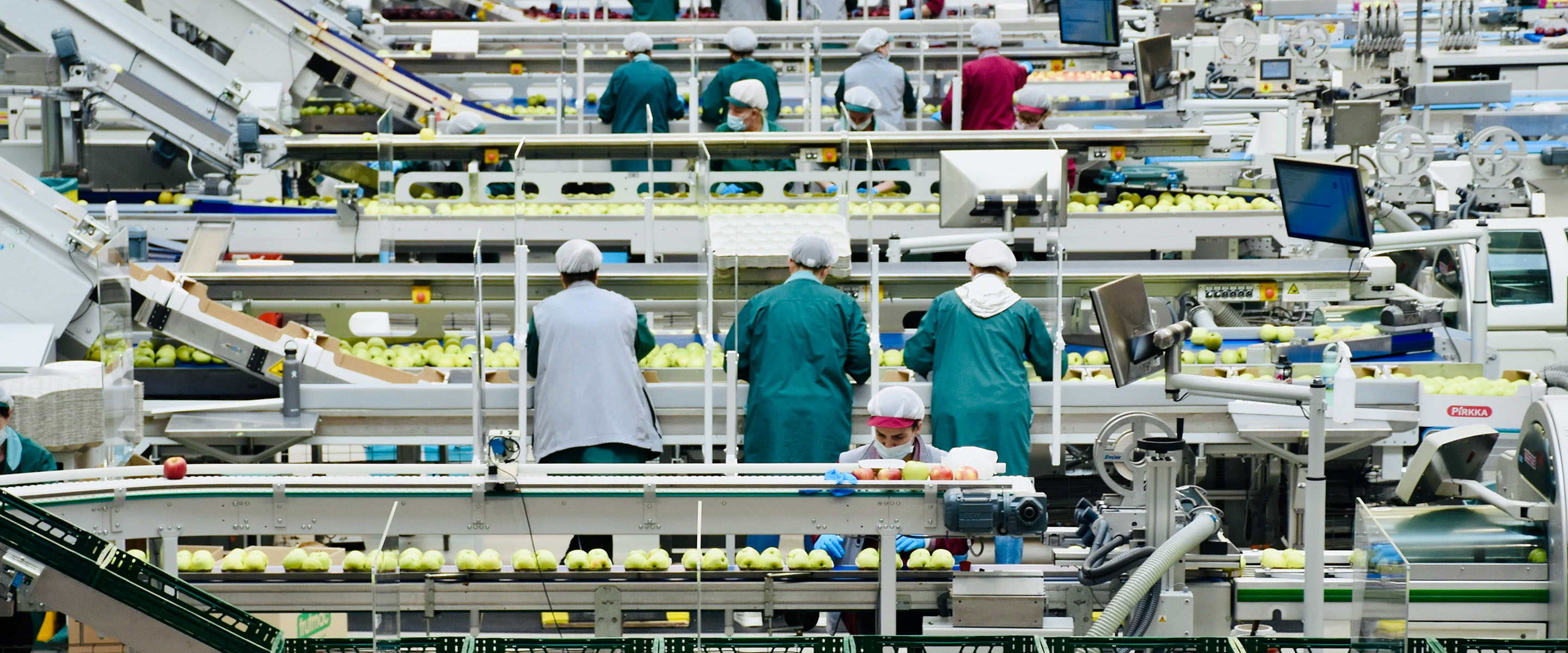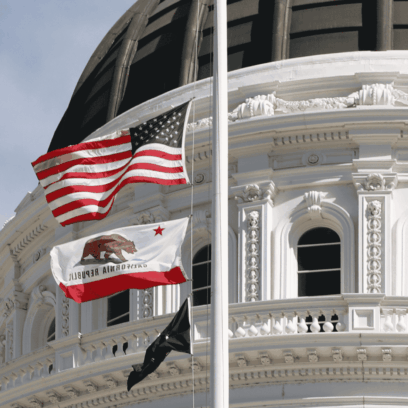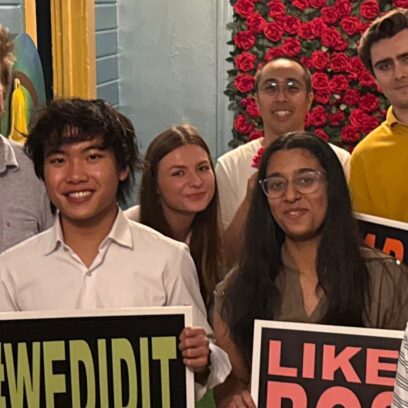Sustainability Roadblocks in F&B


🌍 Carbon markets can feel overwhelming—fragmented data, limited transparency, and conflicting advice make it hard to know where to start. In this webinar, our experts give a clear, practical introduction to the VCM.
Addressing the barriers to achieving sustainability in one of the most resource-intensive sectors.
The food and beverage (F&B) sector is highly carbon-intensive: approximately one-third of total anthropogenic emissions are attributed to this industry. A World Economic Forum (WEF) study shows that more than 70% of the F&B industry’s emissions come from land use—namely agricultural practices and deforestation, which expand farmland to meet growing demand. While emissions from energy consumption (Scope 2 emissions) play a relatively minor role in the total carbon footprint, more than 90% of F&B’s greenhouse gas (GHG) emissions come from indirect sources in the supply chain (Scope 3). In other words, the bulk of the climate impact is not generated by the company itself but by its suppliers, transportation partners, and contract manufacturing partners.
Take the example of farmers. They are key suppliers in the industry and release GHG emissions by driving their farm equipment, using carbon-based fertilizers and pesticides, and tilling the land, among others. Fortunately, there are things crop farmers and other essential actors in the agri-food supply chain can do to reduce their emissions. Yet, addressing F&B decarbonization requires urgent and collective action across multiple sectors and stakeholders. The challenges for such a climate—and resource-intensive industry are complex and demand immediate, coordinated efforts to mitigate and adapt effectively to climate change.
Complex and Fragmented Supply Chains
Agri-food supply chains are complex and fragmented, making it difficult for organizations to implement consistent sustainability policies. These chains involve a diverse range of stakeholders—from farmers to retailers—across different geographies, cultures, financial conditions, and regulatory environments.
As mentioned earlier, most F&B emissions are generated not directly, but across a wide network of growers, manufacturers, distributors, and shippers. Your partners will likely examine your supply chain’s emissions profile, traceability systems, and strategies for meeting 2030 and 2050 climate targets—so robust carbon monitoring across Scope 3 emissions should already be underway.
One effective strategy for addressing this challenge is implementing transparent tracking systems to help monitor emissions at each stage, facilitating targeted interventions. According to SupplyChainDigital, technologies like blockchain enable real-time tracking of product movements and carbon emissions across the supply chain. These systems provide a single source of truth that allows F&B businesses to monitor emissions at each stage, from raw material sourcing to final product distribution.
These technologies typically offer real-time emissions data, product-level granularity, automated data collection, and visualization of emissions reduction progress, while also supporting non-financial ESG reporting. Of course, such systems require collaboration and data sharing across the entire supply chain, making shared commitment to decarbonization essential.
High Energy Consumption in Processing and Manufacturing
F&B processing plants are both energy and carbon-intensive. According to the U.S. Manufacturing Energy Use and Greenhouse Gas Emissions Analysis, more than 60% of on-site energy use goes toward refrigeration and food preparation. Emissions hotspots include cold storage systems and exhaust from evaporators, dryers, ovens, and fryers.
Meeting this challenge begins with identifying capital investments that offer the greatest emissions reduction potential—such as replacing aging boilers with more energy-efficient systems or implementing mechanical vapor recompression (MVR) heat pumps. These systems can dramatically reduce energy demand by recovering and reusing waste heat. For example, at the Chivas Brothers’ distillery, MVR technology reduced the site’s total energy consumption and carbon emissions by nearly half.
Renewable energy also plays a key role in decarbonization. Solar PV systems are especially well-suited for large facilities with expansive rooftops. These systems not only generate clean electricity but also reduce grid dependency. Additionally, F&B operations can convert organic waste into biogas, transforming a common byproduct into fossil-free bioenergy.
While some emissions reduction strategies incorporate machine learning (ML) and robotics in agriculture, it’s important to weigh the environmental benefit against the energy cost of powering these technologies. Ensure that high computational demands do not offset sustainability gains.
Regulatory and Compliance Hurdles
Today’s F&B companies must navigate a growing web of regulations, frameworks, and voluntary initiatives—many of which require substantial time, resources, and expertise. Falling behind in this dynamic landscape can leave businesses exposed to compliance risks.
One major hurdle is the lack of unified global regulatory frameworks. Even within a single company’s operations, regulatory environments can differ widely by region. Europe tends to lead in governance and stringent environmental rules, while other jurisdictions may lag in enforcement or ambition.
Research shows a persistent gap between policy commitments and practical implementation. While many companies express interest in compliance, few have fully integrated sustainable practices into day-to-day operations.
To stay ahead, F&B organizations should assign a dedicated compliance team to monitor evolving regulations, subscribe to industry updates, and participate in key policy discussions. This team should track trends across food safety, nutritional labeling, sustainable packaging, and climate-related disclosures.
“Reducing the F&B industry’s climate impact isn’t just possible—it’s essential for both the planet and the long-term resilience of F&B businesses.”
Pankaj Tanwar, Managing Director, Climate Services
Consumer Demand for Sustainability
Consumers and competitors alike are pushing major F&B companies to raise their sustainability ambitions. If you're a large brand, you're likely expected to take a systematic and proactive approach to sustainability.
Increasingly, consumers are making purchasing decisions based on values. They may avoid products linked to labor violations, deforestation, or excessive packaging and instead seek out transparent supply chains or fair-trade certifications.
Reputation matters. Businesses can gain a competitive advantage by embedding sustainability into their core values and communicating their decarbonization efforts clearly and consistently.
Just as importantly, businesses must guard against greenwashing. Several high-profile companies have faced scrutiny for misleading labels, false advertising, and unsubstantiated claims. A report by the Centre for Climate Change Economics and Policy (CCCEP) and the Grantham Research Institute highlights common legal strategies used in sustainability-related litigation.
Financial Constraints
The F&B sector is undergoing a significant financial transition as it responds to carbon and sustainability demands. Farmers often feel the brunt of this pressure—they’re being asked to change how they produce food while maintaining profitability. Many are exploring carbon credits as a new income stream, but the process can be daunting.
According to Net-Zero Tracker, over a quarter of the world’s largest F&B companies have committed to net-zero targets. In response, financial institutions are beginning to offer specialized programs and funding mechanisms to support the sector’s transition.
Still, many small and mid-sized farmers find the technical requirements, documentation, and upfront costs to be overwhelming. To close this gap, financial partners must go beyond lending—they must act as collaborators in building a more sustainable food system.
This means providing technical support, offering flexible loan terms, and measuring the actual environmental impact of financed projects.
Technological Limitations
Overcoming technological barriers to decarbonization requires collaboration and strategic investment in research and development. For companies in developing economies, international partnerships can play a critical role in expanding access to innovative solutions.
The IPCC has emphasized the benefits of cooperative approaches, including enhanced financial support, improved mechanisms for knowledge-sharing, and increased capacity for local innovation.
Meanwhile, companies must weigh environmental, social, and economic tradeoffs when scaling up new technologies. For example, the plant-based food market is projected to reach $74.2 billion by 2027 (Carbon4 Finance), pushing companies to explore new production techniques to stay competitive.
Finally, while the primary focus should always be on reducing emissions wherever possible—through technology, operational changes, or energy efficiency—carbon offsets can play a valuable role in addressing the emissions that remain after all practical reduction efforts have been made.
Think of offsets not as a shortcut, but as a complementary tool in your climate strategy. By investing in high-quality offset projects—such as reforestation, soil carbon sequestration, or direct air capture—you can take responsibility for current emissions while continuing to drive reductions year over year.
The goal is to reduce what you can now, offset what you can't yet eliminate, and keep shrinking your reliance on offsets over time. When used transparently and responsibly, offsets are a powerful way to accelerate impact today while building toward a low-carbon future.
Conclusion
Reducing the F&B industry’s climate impact isn’t just possible—it’s essential for both the planet and the long-term resilience of F&B businesses. However, it will require ongoing collaboration between all stakeholders, from farmers to consumers. If your company needs help at any step of your sustainability journey—we’re here to help. Contact us today to get started.
Start by mapping your supply chain emissions—especially Scope 3. That means understanding where emissions originate, who your major suppliers are, and what practices contribute most to your footprint. Transparent tracking tools like blockchain-based systems can help identify emission hotspots across the value chain. At CarbonBetter, we help clients implement data systems and processes to trace and measure upstream and downstream emissions, laying the groundwork for credible climate strategies and setting achievable 2030 and 2050 targets.
Decarbonization doesn’t have to mean downtime. Many improvements—like upgrading boilers or installing heat recovery systems—can be phased in. Technologies such as mechanical vapor recompression (MVR) and solar PV systems are particularly effective in F&B facilities, reducing emissions and energy use simultaneously. We help identify capital investments with the strongest return on carbon reduction and guide you through implementation planning that minimizes operational disruptions.
The key is transparency and third-party verification. Ensure every sustainability claim is backed by verifiable data or certifications, such as third-party lifecycle assessments, fair trade, or regenerative farming practices. Avoid vague language or aspirational goals without clear progress updates. At CarbonBetter, we support clients in building ESG reports, carbon inventories, and claims that stand up to scrutiny—so you can communicate confidently without legal or reputational risk.
New funding models are emerging to support sustainability transitions in F&B—especially for farmers and processors. These include green bonds, climate-aligned loans, and grants tied to specific emissions-reduction outcomes. In some cases, carbon credit revenue or ESG-linked financing can offset upfront investment. CarbonBetter partners with clients to identify funding opportunities and structure projects in ways that maximize access to financial support while delivering measurable climate benefits.
Yes—when used responsibly and transparently. Offsets should never be your first move, but they’re useful for addressing emissions that can’t yet be eliminated. The goal is always to prioritize reduction first. When offsets are needed, choose high-quality, verified projects like soil carbon sequestration, reforestation, or direct air capture. We help F&B companies evaluate and integrate offsets into broader decarbonization strategies so that they complement—not replace—real reductions.

About the Author
Johanna Sörbom is a Manager on CarbonBetter’s Climate Services team, with extensive experience in project management and the successful delivery of complex consulting mandates across a diverse range of industries, including agri-food, grocery retail, apparel, technology, healthcare, and transportation. Johanna holds a Masters in Sustainable Energy Engineering and a Bachelors in Environmental Engineering from KTH – Royal Institute of Technology in Stockholm, Sweden.


